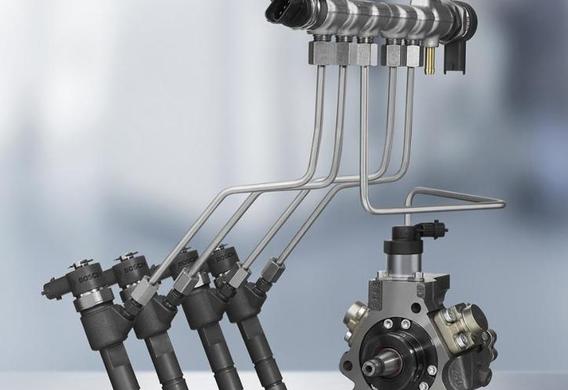
The fuel injection with the mechanical DDG is an outdated but reliable and well-established system, which was mainly applied to atmospheric diesel engines in the 1980s and 1990s.
The high pressure fuel pump (TDDP) is one of the main components of the diesel injection system. The pressure pump is one of the most difficult points in the entire fuel delivery system, as it is not only for high pressure fuelling, but also for dosing, performing the same function of the throttle in the diesel injection system. The mechanical TDDP was used mainly in diesel injection systems for passenger cars of the end of the last century, but there were precedents for installing it as part of a direct injection system for petrol engines.
The pressure pump is designed to control the right moment of injection and to supply a certain amount of fuel under pressure into the motor cylinders.
There are two types of fuel injection: direct action and battery injection. It's the first kind of pump that goes on. In these devices, the injection and injection processes flow simultaneously and the drive train is mechanical.
History of the construction of a mechanical TNT
In the construction of the first stationary powertrains, Rudolf Diesel suggested that in order for the fuel to ignite, it must be placed in high pressure cylinders. Diesel has created an engine version of the engine based on the ignition principle. In the injection system, it used a bulky, but quite powerful compressor. Later, in the 1920s, Robert Bosch created the first reliable and at the same time compact mechanical TDDP. On serial trucks Mercedes this node was tested in 1927, and passenger cars appeared only in 1936.
Mechanical TNT device and operating principle
Depending on the design of the DHBs, the following species are: average, distribution and trunking. In the construction of a runny DDP, a range pair is used, according to the number of cylinders in the engine. The pairs are located in the body of the pump, which has channels for the extraction of the fuel. The Plounder is moving from the dollar-like shaft, which in turn is from the collapse. The Pluers are pressed to the bark of the vail with a spring.
The chant of the rotating shaft affects the pushrod of the plunger. The latter, in turn, shall be moved up the tulke by sequentially closing the exhaust outlet and outlet. This creates the pressure required to open the pressure relief valve, after which the fuel is applied to a specific nozzle. The pump was used, for example, on the CD20 diesel engine, Nissan, a real "workhorse" of the end of the eighties-the beginning of the ' 90s. The CD20 and its modifications can be seen under the hood of a large number of machines-for example, Nissan Sunny, Serena, Bluebird, and so on. There were other Nissan diesel engines with mechanical DDP. At the same time, Nissan is not the only example. The mechanical DDP can be found on the old models of practically any manufacturer.
Pros and cons of mechanical TNT
The mechanical TDP has several advantages. For example, his work is not dependent on the state of the vehicle's vehicle network, for which he is very much loved by admirers of the rally-raids on the SUV, which often storm the river, the bay of the engine with water. There are such pumps and drawbacks: lack of conformity with modern eco-norms, low efficiency, low injection pressure. The main drawback is the dependence of the pump on the quality of the diesel fuel-the fact is that the fuel plays the role of lubricant in the mechanical TLDP, and if any extraneous impurities or water is hit, the pump wear is growing rapidly. The DHBs are a complex high-precision knot, and the cost of repair is pockable.
Operation of the mechanical TNT
As mentioned earlier, the DHBs with mechanical injection are durable and reliable. Problems are rarely reported, and mainly because of low-quality diesel fuel, motor oil, or because of the high mileage. The mechanical regulator and the plunger couples are the most commonly used. The main features of the breakdown of the nozzle and the pressure pump are: opacity, difficult launch, increase in fuel consumption, unsteady work at idling, extraneous noise, in the form of a rope or with time lag responding to the pressing of pedal gas, reduction of power.







